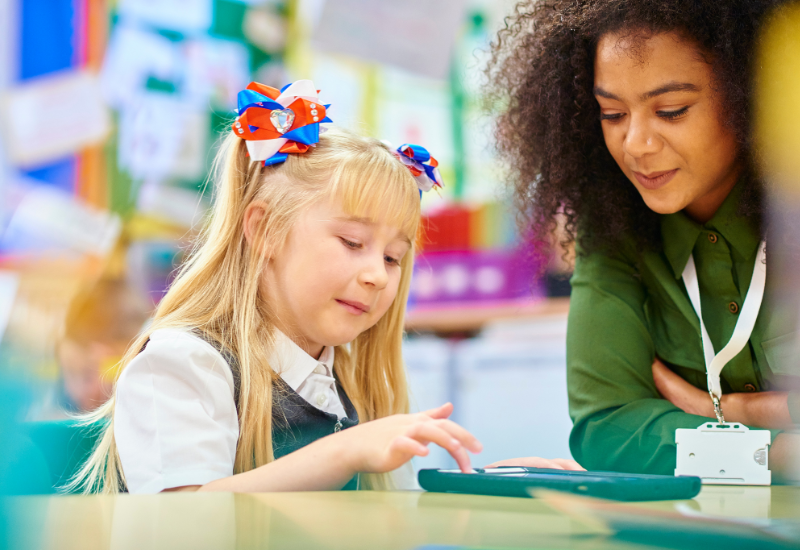Roots Director of Operations and Innovation On Needing an Instructional Purpose in Selecting Software
Roots Director of Operations and Innovation, Jill Tew, shares how understanding of instructional needs drive technology adoption.

Transcript: Jill Tew: What we try to do and what I’m very kind of vocal about is never just adopting an app because it’s a bright new, shiny thing. It needs to fit somewhere in our list of priorities for instruction. So, is there a gap. So, to give an example, at the beginning of this year, we started off on the kind of literacy and reading side of the digital curriculum with a couple of apps that were more digital library focused, so things that we’re going to work on fluency, that we’re going to read a book aloud to a scholar and kind of have them follow along – maybe read it by themselves at home, or later in the week, digital apps that would have an offline mode to download digital books they could actually access at home, which is really important to us, too. We also had some apps that were free that were great that were kind of helping scholars just learn letter recognition or sight word recognition – that sort of thing. What we did not have at the time – and what became apparent as we went through the school year – was that we didn’t have an app that really did a good job of instructing scholars on reading strategies – so segmenting words, like learning blends, that sort of thing. We had some great in-person instruction for that, but as we kind of went through and saw scholars spending their time doing more of the digital library activities, we realized they’re getting a lot of this, but not a lot of at-bats at really learning reading strategies when they’re in the iPad Center. And so, we did some asking around to schools that we were close with and trusted, and got a recommendation for an app called Lexia Core 5 that we rolled out a pilot for in April, and it’s been going really, really well. But it’s a good example of now we know that all the different parts of reading instruction that are taught by a teacher could have their equivalents on the digital curriculum side, and should we be looking for apps that fill specific gaps as opposed to just “Hey, I’ve heard of this. This app is cool.” So, it’s always with a bench towards, “Do we need an app to make this better right now? Is this an instructional focus for us?” If the answer is no, probably wait and look for it later... And on the teacher’s side, the same is also true teachers are closer to the gaps than we are. So, if a teacher comes to me and says, “I don’t feel like the two math apps that we’re using this year are really addressing this objective or this focus for me that’s going to be really important for us as we expand to second and third grade,” I have time to do some research and ask around and get some pilots established or some demos that we can to and poke around and see if it’s a good fit for the need we’re trying to fill.
Explore More

Empowering Teachers to Pilot Edtech Tools
A district technology team in MA created a process for teachers to propose pilots of new edtech tools in their classrooms

Capturing Teachers’ Thoughts on Technology Usage
Teachers can offer valuable insights on whether devices and tools effectively meet student needs for learning, and therefore should be...

Evaluating Edtech Tools
Districts must carefully consider whether edtech tools are meeting their intended goals by gauging the impact, adoption, satisfaction, and...